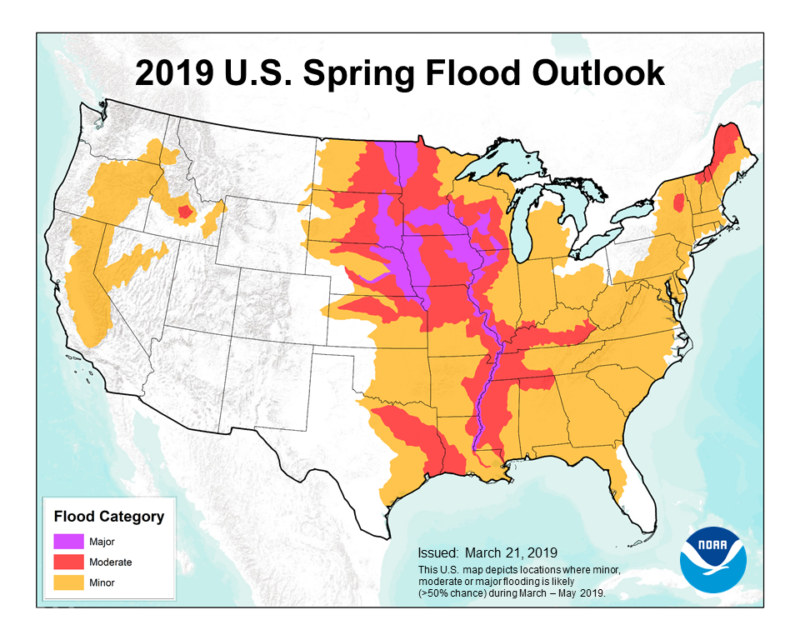Much of the Mississippi, Missouri and other heartland rivers are at risk of record flooding this spring, after a wet winter and rapid snowmelt has raised the danger for nearly two-thirds of the Lower 48 states, according to a National Oceanic and Atmospheric Administration outlook issued Thursday.
“The majority of the country is favored to experience above-average precipitation this spring, increasing the flood risk,” NOAA warned.
Areas of the upper Mississippi and Missouri River basins in Nebraska, Minnesota and Iowa have already been hit with severe flooding that’s been blamed on rapid snow melt, heavy late winter-early spring rains and snowfall hitting already saturated soils. Today, the Coast Guard imposed a temporary safety zone closing the Missouri to river traffic between Kansas City and St. Joseph, Mo., from mile marker 360 to 450.

Levees along the Missouri River failed during flooding in Fremont County, Iowa. Iowa Emergency Management photo
Forecasts predict more rain and melting snow “will prolong and expand flooding, especially in the central and southern U.S. As this excess water flows downstream through the river basins, the flood threat will become worse and geographically more widespread,” the NOAA outlook states.
Record winter precipitation across much of the country brought early high water that forced temporary shutdowns of barge traffic on parts of the Tennessee and Ohio rivers. The upper Mississippi and Red River of the North basins received rain and snow totals 200% above average so far this year.
NOAA workers foresee the greatest risk for moderate to major flooding on the upper, middle, and lower Mississippi River basins including the mainstem Mississippi River; the Red River of the North; the Great Lakes; eastern Missouri River; and on the lower Ohio, lower Cumberland, and Tennessee river basins.
“The extensive flooding we’ve seen in the past two weeks will continue through May and become more dire and may be exacerbated in the coming weeks as the water flows downstream,” said Ed Clark, director of NOAA’s National Water Center in Tuscaloosa, Ala., in a statement. “This is shaping up to be a potentially unprecedented flood season, with more than 200 million people at risk for flooding in their communities.”
The flood risk outlook is based on a number of factors, including current conditions of snowpack, drought, soil moisture, frost depth, streamflow and precipitation. Local heavy rainfall, especially associated with thunderstorms, can occur throughout the spring and lead to flooding even in areas where overall risk is considered low. In the western U.S., snowpacks at higher elevations may continue to build over the next month, and the flood risk will depend on future precipitation and temperatures.




